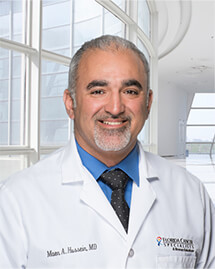[177Lu]Lu-DOTA-TATE plus long-acting octreotide versus high‑dose long-acting octreotide for the treatment of newly diagnosed, advanced grade 2–3, well-differentiated, gastroenteropancreatic neuroendocrine tumours (NETTER-2): an open-label, randomised, phase 3 study
BACKGROUND
There are currently no standard first-line treatment options for patients with higher grade 2–3, well-differentiated, advanced, gastroenteropancreatic neuroendocrine tumours. We aimed to investigate the efficacy and safety of first-line [177Lu]Lu-DOTA-TATE (177Lu-Dotatate) treatment.
METHODS
NETTER-2 was an open-label, randomised, parallel-group, superiority, phase 3 trial. We enrolled patients (aged ≥15 years) with newly diagnosed higher grade 2 (Ki67 ≥10% and ≤20%) and grade 3 (Ki67 >20% and ≤55%), somatostatin receptor-positive (in all target lesions), advanced gastroenteropancreatic neuroendocrine tumours from 45 centres across nine countries in North America, Europe, and Asia. We used interactive response technologies to randomly assign (2:1) patients to receive four cycles (cycle interval was 8 weeks ± 1 week) of intravenous 177Lu-Dotatate plus intramuscular octreotide 30 mg long-acting repeatable (LAR) then octreotide 30 mg LAR every 4 weeks (177Lu-Dotatate group) or high-dose octreotide 60 mg LAR every 4 weeks (control group), stratified by neuroendocrine tumour grade (2 vs 3) and origin (pancreas vs other). Tumour assessments were done at baseline, week 16, and week 24, and then every 12 weeks until disease progression or death. The primary endpoint was progression-free survival by blinded, independent, central radiology assessment. We did the primary analysis at 101 progression-free survival events as the final progression-free survival analysis. NETTER-2 is registered with ClinicalTrials.gov, NCT03972488, and is active and not recruiting.
FINDINGS
Between Jan 22, 2020, and Oct 13, 2022, we screened 261 patients, 35 (13%) of whom were excluded. We randomly assigned 226 (87%) patients (121 [54%] male and 105 [46%] female) to the 177Lu-Dotatate group (n=151 [67%]) and control group (n=75 [33%]). Median progression-free survival was 8·5 months (95% CI 7·7–13·8) in the control group and 22·8 months (19·4–not estimated) in the 177Lu-Dotatate group (stratified hazard ratio 0·276 [0·182–0·418]; p<0·0001). During the treatment period, adverse events (of any grade) occurred in 136 (93%) of 147 treated patients in the 177Lu-Dotatate group and 69 (95%) of 73 treated patients in the control group. There were no study drug-related deaths during the treatment period.
INTERPRETATION
First-line 177Lu-Dotatate plus octreotide LAR significantly extended median progression-free survival (by 14 months) in patients with grade 2 or 3 advanced gastroenteropancreatic neuroendocrine tumours. 177Lu-Dotatate should be considered a new standard of care in first-line therapy in this population.
FUNDING
Advanced Accelerator Applications, a Novartis Company.
